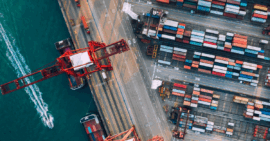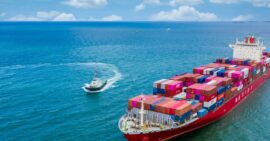As countries within the Asia-Pacific region continue to recover from the economic effects of the pandemic, Japan is set to double its GDP after signing the largest trade bloc in history, and its first economic agreement with China and South Korea.
We are talking about the Regional Comprehensive Economic Partnership (RCEP), the latest addition to an arsenal of available free trade agreements (FTAs), which came into effect on 1 January 2022.
Hailed the new ‘centre of gravity’ for global commerce, RCEP promises to eliminate 90% of tariffs* for all member countries over the course of 20 years., as well as boost opportunities for inter-regional trade.
With Asia at the centre of this evolving geopolitical climate, un-impinged progress and growth is paramount for success in 2022.
Leveraging free trade agreements (FTAs) can be a game changer to the growth potential of your business.
Japan’s window of opportunity
FTAs can strengthen your supply chain and give you a significant competitive advantage in three key areas:
- Increase profitability and reduce landed costs, by reducing or eliminating duty spend.
- Accelerate business growth, through increased opportunities to reach new markets and customers, and access to a wider range of goods and services.
- Improve global collaboration, by closing gap barriers to trade, enabling greater supply chain velocity and stimulating inter-regional activity.
Key FTAs in Asia
The RCEP
RCEP will enhance trade and investment activities between Australia, New Zealand, Japan, South Korea, China and ASEAN. The partnership between the 15-member countries represents a third of the world’s population and 30% of global GDP.
In a recent analysis of the deal, the UN’s trade department UNCTAD said RCEP would boost inter-regional trade by $42 billion. In addition to simplifying rules around trade, intellectual property, e-commerce and competition, RCEP will also encourage more digital, paperless trade.
The RCEP launch coincides with the World Customs Organisation’s (WCO) Harmonised System (HS) code changes, which businesses will be required to use to comply with customs clearance, duty payments and the use of trade agreements.
The CPTPP, an underrated FTA
Another FTA shaping the state of global trade is the Comprehensive and Progressive Agreement for Trans-Pacific Partnership (CPTPP), which helps businesses establish export markets in the 11-member countries. The CPTPP, which may yield better results than the RCEP for some organisations, not only reduces tariffs for goods but aims to protect the principles of global free trade.
Maximising FTA eligibility while maintaining compliance
With a plethora of FTAs available, coupled with the ever-changing landscape of regulatory complexity and trade environment, risk of non-compliance penalties and stifled business growth are higher than ever.
Blocs like RCEP pave the way for increased digital trade, and many multi-nationals have recognised that investing in technology is the best way to mitigate risks and leverage FTA opportunities successfully.
With more than half the available FTAs offering self-certification for compliance, a single source of data makes it easier to maximise opportunities while ensuring all relevant compliance obligations are met.
Managing your supply chain with a decentralised approach increases time and cost at various stages and is fraught with risk of errors. This can lead to penalties for compliance breaches or customs/shipping delays.
The role of technology to improve supply chain
Consolidating your system into one digitised platform will improve visibility in your supply chain so you can identify ways to reduce costs and increase your bottom line.
A digitised platform enables a more agile supply chain strategy, so you can pivot with changes in your supply chain as they occur and compare the impact of these factors. Automated analysis considers factors such as sanctions, risks, projected payment of duties and taxes, ease of doing business in a country and regulatory changes.
Global trade management solutions are not as onerous to implement as you may think. Some offer user-friendly interfaces and can integrate seamlessly with other systems. They are built to help optimise your supply chain, drive growth and enable you to get the most out of FTAs. This is the future of global trade.
For further reading, download Thomson Reuters’ Global Trade Report, Blind Spots and External Forces Impacting Global Trade in Asia


